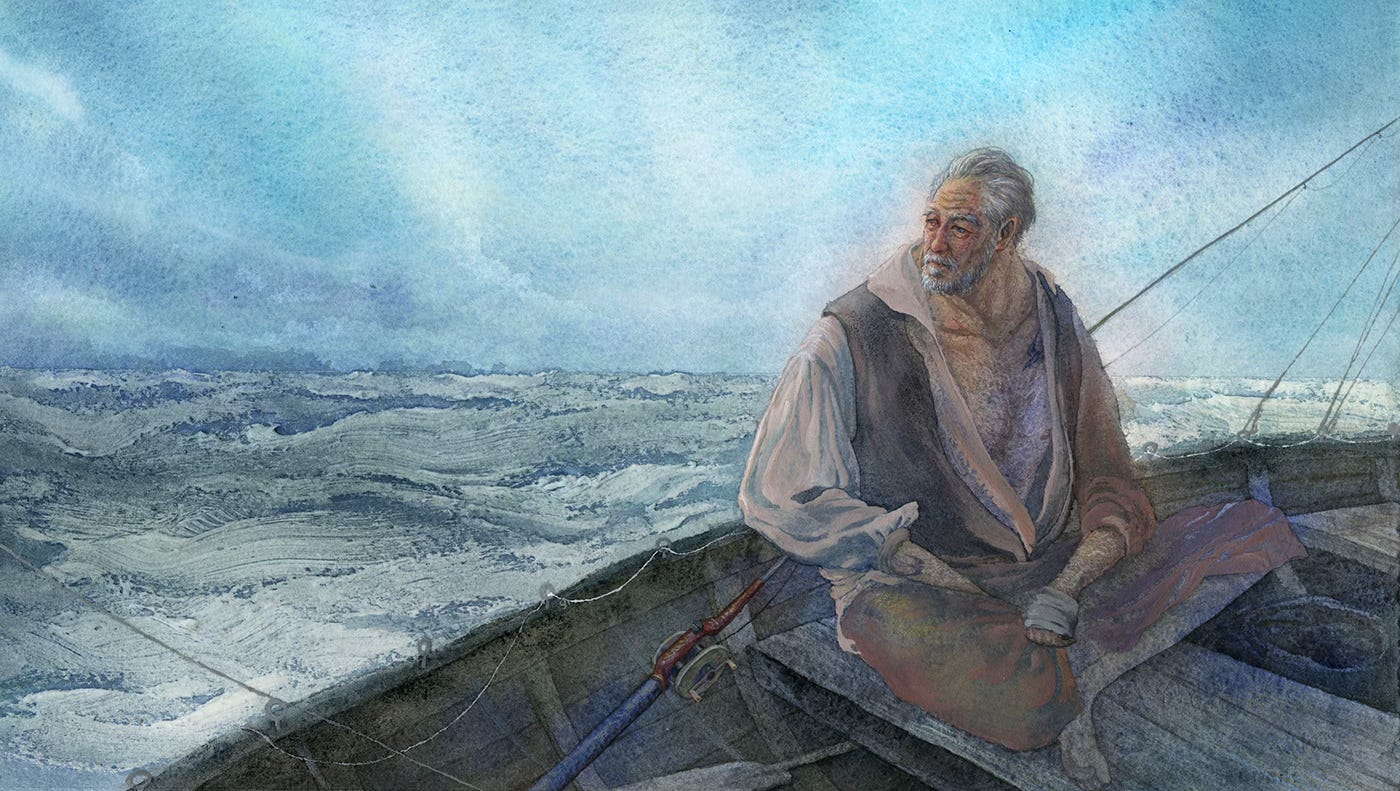The Old Man and the Sea: An Existentialist Story
The review of a beautiful story about our inevitable physical death in contrast with the immortality of the fighting spirit.
I recently finished Hemingway’s “The Old Man and the Sea.” It’s a beautiful story—one capturing both our inevitable physical death and the immortality of the fighting spirit in man. It’s the book that I, and maybe even you, need right now. Because it reminds us that no matter how bad our outlook is in the present moment, adventure is still to be had. Now, this doesn’t mean that we’ll be successful or that we’re not going to go down in flames. It’s entirely possible that we’re on a burning ship covered in engine oil. Instead, it is saying that adventure is always possible, but that you must approach this reality with a spirit of resolve, no matter what.
Hemingway embodied it himself by living a life full of adventure which unquestionably contributed to his larger than life status in history of American literature. For him, the adventure paid off. His interesting life allowed him to write interesting things. The message here is that you must go out and take on adventure and do things if you want to have interesting things to say. Sure, you might fail, but you’ll never know unless you take on adventure with this fighting spirit that is within each of us.
"The Old Man and the Sea" is a timeless tale of this aforementioned resilience of the human spirit. It follows the journey of Santiago, a Cuban fisherman, who sets out to catch a giant marlin. Despite facing immense challenges and setbacks, Santiago's determination and fighting spirit remained unbroken. Through Santiago's epic struggle, Hemingway explores these themes of perseverance, isolation, and the indomitable nature of the human spirit, leaving me with a profound and enduring message of hope and endurance in the face of adversity.
Hemingway’s novel shows us that sometimes we’re without hope, but we still must take action for our very being depends upon it. We must not rely on hope. Less hope, more action, so to say. Santiago, the old man in the story, remarks that “Man is not made for defeat. A man can be destroyed but not defeated.” Here, we see Hemmingway throw light on this message: determination must be maintained irrespective of the count of our failures in pursuit of any given goal, or even in life.
These two words, destroyed and defeated, are of important note as they optimize the radical courage found within us all. A man can be destroyed, he can be killed, he can be ruined, he can be absolutely shattered, he can be physically weakened, he can even be handicapped, but despite any level of physical destruction, man cannot be defeated. Defeat for Hemingway signifies a loss of hope for victory. To refuse defeat, man never gives up his attitude of zeal, even when it seems that the situation is hopeless.
Destruction, then, is the destruction of the body, while defeat represents the creation of a permanent state within the mind. The mind is much more difficult to conquer, thus “A man can be destroyed but not defeated.” The message here is almost identical to that shared by Viktor Frankl in his book, “A Man’s Search for Meaning,” which documents the psychological experiences of Auschwitz prisoners during the Holocaust. In both books we take away this message: Rather than questioning the meaning of his life, man should acknowledge that life questions him. In essence, each individual is interrogated by life, and he can only respond to life by taking responsibility for his own existence. He can only reply to life by being accountable.





